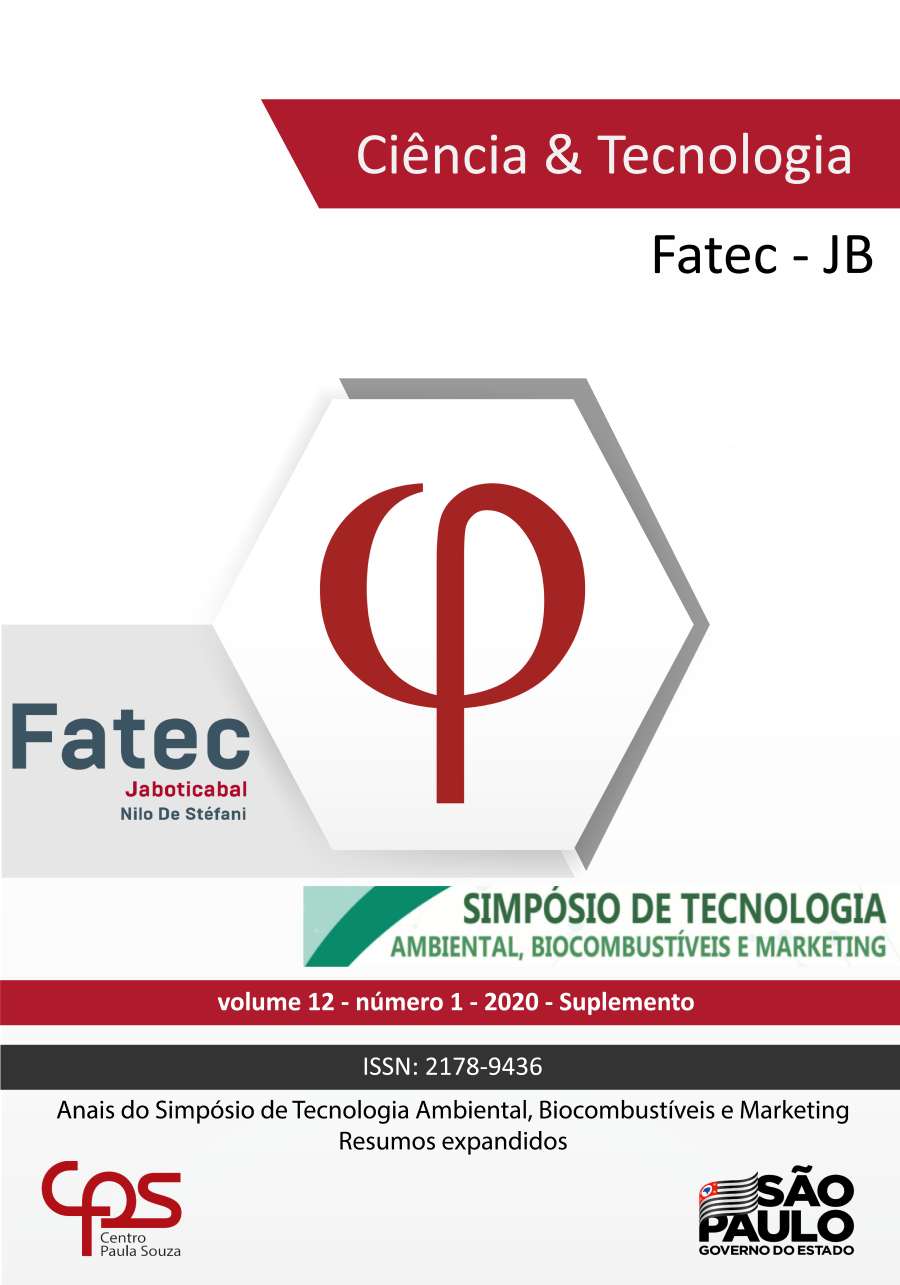TRATAMENTO BIOLÓGICO DE VINHAÇA DA DESTILAÇÃO DE ETANOL DE CANA DE AÇÚCAR
DOI:
https://doi.org/10.52138/sitec.v11i1.133Palavras-chave:
Processos bioquímicos, Vinhaça, Fermentação anaeróbica, Resíduos industriaisResumo
A vinhaça é um resíduo da destilação do licor da fermentação da cana de açúcar, para a produção de etanol. Seu volume produzido deste processo é elevado e em fluxo continuo. A vinhaça é um agente contaminante de alto risco para solos, rios, drenes, ar e ecossistemas. Seu tratamento e transformação a novos produtos em forma sustentável é uma necessidade. Emergentes tecnológicas têm surgido nas últimas décadas para a conversão da vinhaça. No entanto, devido a seu elevado volume, novas pesquisas são essenciais para a descontaminação da vinhaça e sua conversão a novos produtos. Em este contexto, este trabalho teve como objetivo a conversão biológica da vinhaça através da fermentação anaeróbica controlada a biogás. O DQO, o pH e o biometano foram estudados durante a fermentação anaeróbica. O DQO mostrou um decréscimo acentuado durante os primeiros dias, depois permaneceu constante. O pH se manteve na faixa próximo de 6 a 7,5 durante a fermentação. Entretanto, a produção de biometano foi continua durante o tempo da fermentação. A fermentação anaeróbica mostrou ser um importante processo, que pode contribuir à descontaminação da vinhaça e permite gerar em forma segura, sustentável, um importante biocombustível e precursor de inúmeros produtos químicos como é o biometano.
Referências
Wilkie, A. C., Riedesel, K. J., & Owens, J. M. Stillage characterization and anaerobic treatment of ethanol stillage from conventional and cellulosic feedstocks. Biomass and Bioenergy, 19(2), 63-102. https://doi.org/10.1016/S0961-9534(00)00017-9, 2000.
Corresponsal rpp. Chiclayo: Desa remite informe a fiscalía sobre contaminación de río. RPP. https://rpp.pe/peru/actualidad/chiclayo-desa-remite-informe-a-fiscalia-sobre-contaminacion-de-rio-noticia-763405 acessado 26 Janeiro, 2015.
Dayanis, C.A., Ravelo Marco, R., Carlos Andrés, P. C., & Deivis Jhoan, G.-M. Evaluación de producción de biogás y reducción de carga orgánica de vinazas mediante digestión anaerobia.
Revista Colomb Biotecnología, 21(2), 118-130, 2019.
Cruz-Salomón, A., Meza-Gordillo, R., Rosales Q. A., Ventura C.C., Lagunas-Rivera, S., & Carrasco-Cervantes, J. Biogas production from a native beverage vinasse using a modified UASB bioreactor. Fuel, 198, 170-174. https://doi.org/10.1016/j.fuel.2016.11.046, 2017.
González, P. A. A., García, L. S. Á., Montoya, E. B., Corrales, L. C., & Sánchez, L. C. Aislamiento e identificación de microorganismos del género Methanococcus y Methanobacterium de cuatro fuentes de Bogotá D.C. NOVA, 6(10). https://doi.org/10.22490/24629448.406, 2008.
Ortiz, J. L. C., Rodríguez, J. A. C., Cajiao, Á. M. P., & Maldonado, J. I. Caracterización fenotípica de metano génicas aisladas de un sistema di-fafs operado con lixiviado, agua residual y estiércol porcino. @limentech, Ciencia y Tecnología Alimentaria, 13(2), 108-122. https://doi.org/10.24054/16927125.v2.n2.2015.1876, 2015.
Janke L., Leite, A., Wedwitschka, H., Schmidt, T., Nikolausz, M., Stinner, W. Biomethane production integrated to the Brazilian sugarcane industry: the case study of São Paulo state, Proceedings of the 22nd European Biomass Conference and Exhibition, Hamburg, Germany, p. 2326. 10.5071/22ndEUBCE2014-3DV.2.4 2014.
Budiyono, B., Sumardiono, S. Effect of total solid content to biogas production rate from vinasse, Int. J. Eng. 27, 177. 2014.
Downloads
Publicado
Edição
Seção
Licença
Copyright (c) 2021 Ciência & Tecnologia

Este trabalho está licenciado sob uma licença Creative Commons Attribution 4.0 International License.


